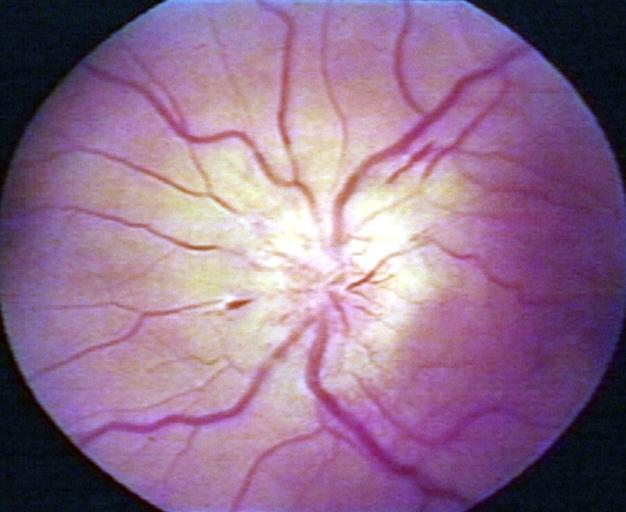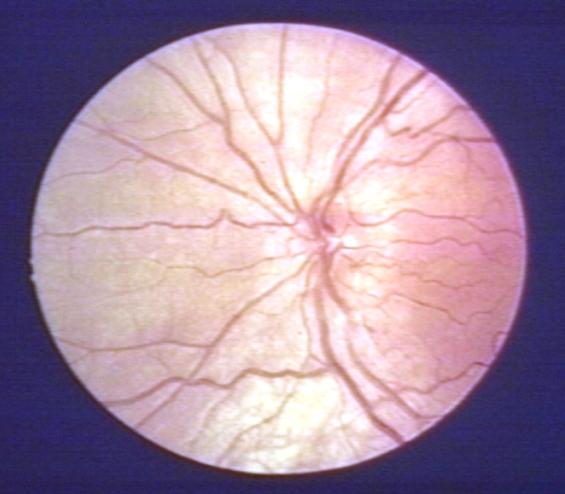Papilledema: Difference between revisions
| Line 22: | Line 22: | ||
==[[Papilledema pathophysiology|Pathophysiology]]== | ==[[Papilledema pathophysiology|Pathophysiology]]== | ||
==References== | ==References== | ||
Revision as of 17:00, 16 July 2012
|
Papilledema |
|
Diagnosis |
|---|
|
Treatment |
|
Case Studies |
|
Papilledema On the Web |
|
American Roentgen Ray Society Images of Papilledema |
Template:Search infobox Editor-In-Chief: C. Michael Gibson, M.S., M.D. [1]; Associate Editor(s)-In-Chief: Kalsang Dolma, MBBS
Synonyms and Keywords: papilloedema
Overview
Pathophysiology
References
Causes
Common Causes
Cerebral venous sinus thrombosis
Idiopathic intracranial hypertension
Causes by Organ System
Causes in Alphabetical Order
Differentiation of Papilledema from other Disorders
Papilledema should be distinguished from pseudopapilledema which is caused by
- Optic disc drusen
- Tilted optic disc
Epidemiology and Demographics
Papilledema occurs in approximately 50% of those with a brain tumour.
Diagnosis
Checking the eyes for signs of papilledema should be carried out whenever there is a clinical suspicion of raised intracranial pressure. Because of the (rare) possibility of a brain tumor, pseudotumor cerebri or cerebral venous sinus thrombosis, all of which can increase intracranial pressure, this examination has become common for patients suffering from headaches.
Physical Examination
Eyes
-
Papilledema.
-
Pseudopapilledema.
There are 10 hallmarks of papilledema:
- Blurring of the disc margins
- Filling in of the optic disc cup
- Anterior bulging of the nerve head
- Edema of the nerve fiber layer
- Retinal or choroidal folds
- Congestion of retinal veins
- Peripapillary hemorrhages
- Hyperemia of the optic nerve head
- Nerve fiber layer infarcts
- Hard exudates of the optic disc

